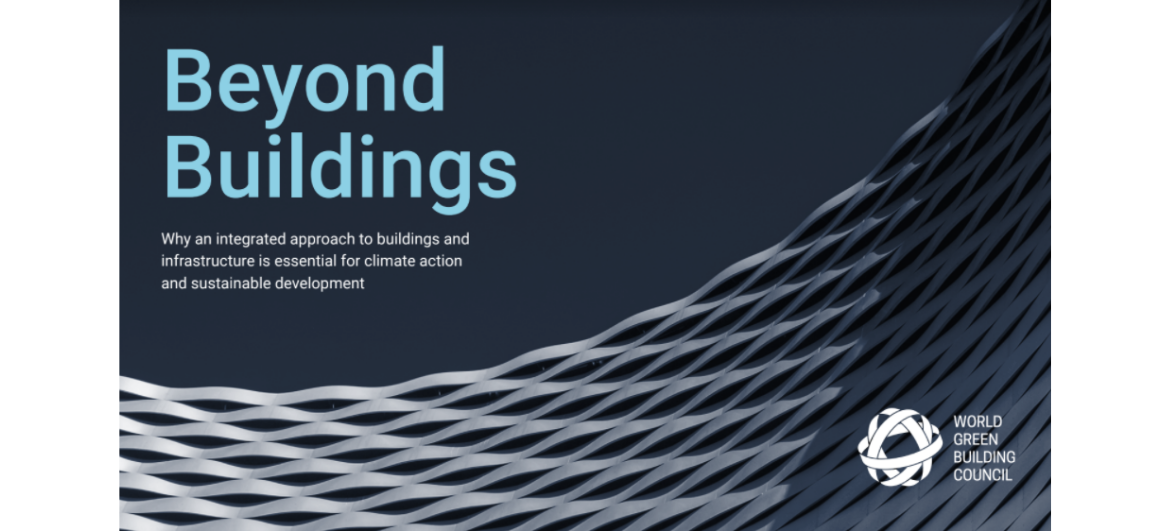
Earlier this year, the World Green Building Council global network launched THE flagship Beyond Buildings report. This calls for an integrated approach to sustainability in the built environment – considering both buildings and infrastructure – which is essential for climate action and sustainable development. In this new blog series, we delve into the key findings behind the report and explore additional co-benefits for taking a broader approach to advancing sustainability in the built environment.
Authors: Catriona Brady, Director of Strategy and Development & Sara Kawamura, Project Officer, Better Places for People, WorldGBC and Richard Palmer, Director of Global Sustainability, Dar & Integral Group
Climate change has been amplifying in recent decades, both in terms of physical impacts and political, business and societal momentum. The unchecked increase of greenhouse gas emissions is increasing the magnitude and frequency of natural disasters, including floods, hurricanes, droughts, and wildfires. As scientific reports continue to confirm the anthropogenic contributions which are fuelling the extreme weather events of recent years, it is clear that we are in a planetary crisis, where our natural systems are being stressed by human activity.
The impact of the built environment
The built environment (capturing buildings and infrastructure) is responsible for 75% of global greenhouse emissions, with the building sector on its own accounting for 37%. Alarmingly, the trajectory of these emissions is that they are expected to grow:
- Within the next 40 years, 230 billion square metres of new buildings will be constructed, and 75% of the infrastructure required by 2050 still needs to be built.
- Around 50% of emissions from new buildings will be from embodied sources, and half from operational sources between 2020 and 2050.
As outlined in WorldGBC’s flagship ‘Beyond Buildings’ report, the role of the built environment in tackling our climate crisis is absolutely fundamental to sustainability action. Through this cutting edge report, the WorldGBC network champions the necessity of tackling sustainability for the entire built environment across all sectors – from buildings to transport, energy generation to utilities, social infrastructure to waste management, and everything in between. Buildings cannot decarbonise without the infrastructure that exists within and between them, the purpose of much of our infrastructure is to support how people live within our buildings and cities. This interrelationship is critical to encouraging systems thinking towards sustainable development.
Buildings and infrastructure are independent in many ways, from interdependence in use, to shared construction and material supply chains. Despite areas of similarity, the development, construction, ownership and operation of building and infrastructure are often fully separated and consequently, so are their sustainability ambitions. Working in silo means that there is a risk of valuable opportunities being missed when addressing climate targets and sustainability goals. These two critical sectors for climate action can’t decarbonise on their own.
Through the ‘Beyond Buildings’ report, WorldGBC advocates for a sustainable built environment – including both buildings and infrastructure – that is resilient, in line with our climate goals, and that meets the targets of the Sustainable Development Goals. To implement this, the report calls for a more closely aligned approach to sustainable buildings and infrastructure in pursuit of our shared climate and sustainability ambitions.
In addition to the work published in Beyond Buildings, there are additional co-benefits for taking an aligned and integrated approach to sustainability in the built environment and considering buildings and infrastructure as part of one, cohesive system for sustainability action. The co-benefits are presented across three thematic focus areas of WorldGBC’s strategy: Climate Action, Health, Wellbeing & Social Value, and Resources & Circularity, and provide supplementary evidence to the main report on the opportunity of collaborating for united action on both buildings and infrastructure.
